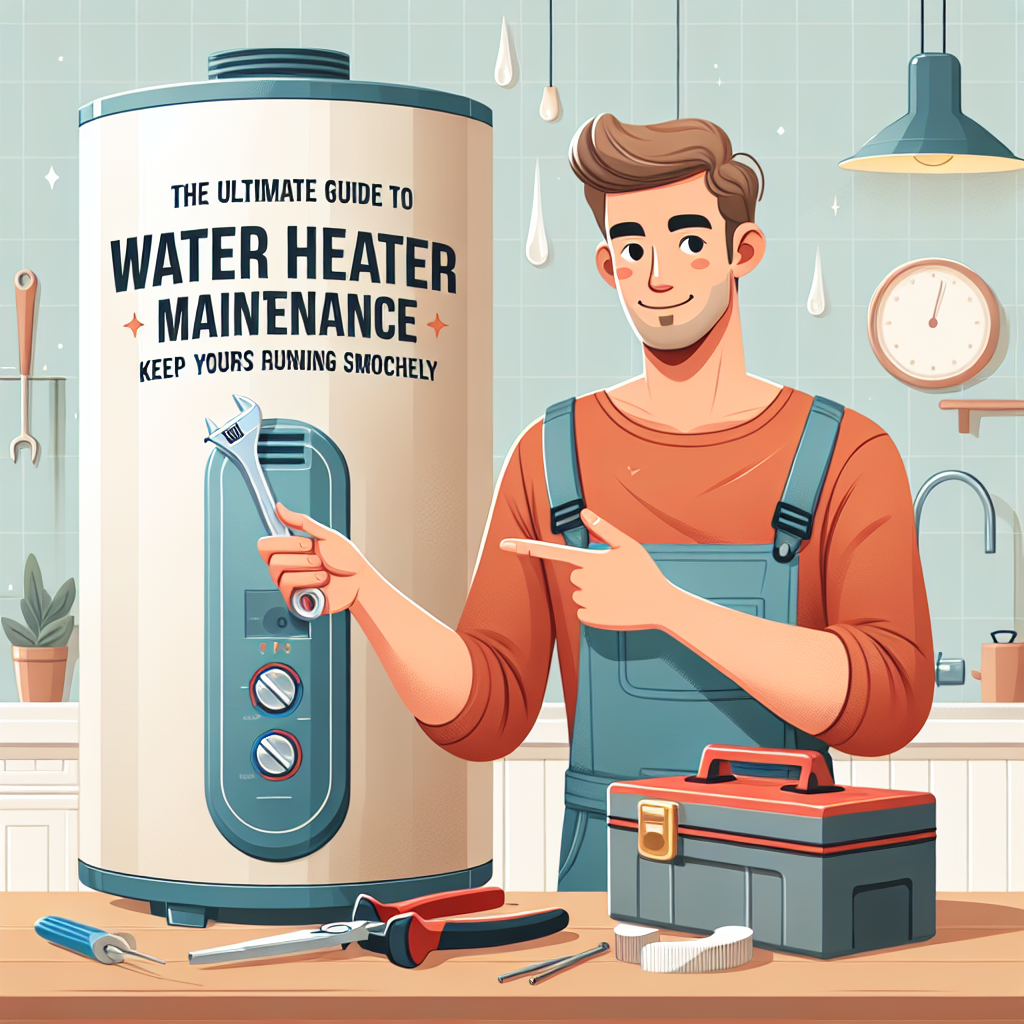Water heaters are often the unsung heroes of our homes. They deliver hot water for showers, dishwashing, laundry, and countless other tasks, making our lives more comfortable. However, like any appliance, they require regular maintenance to operate efficiently and last longer. This ultimate guide to water heater maintenance will walk you through essential practices to keep your water heater running smoothly.
Why Water Heater Maintenance Is Important
Just as you wouldn’t skip oil changes for your car, ignoring your water heater can lead to significant issues down the road. Regular maintenance not only extends the lifespan of your water heater but also improves its efficiency, potentially saving you money on energy bills. Additionally, a well-maintained unit can prevent unexpected breakdowns, ensuring that you always have hot water when you need it most.
Understanding Your Water Heater: Types and Components
Before diving into maintenance, it’s essential to understand the types of water heaters available. The two most common are:
- Tank Water Heaters: These store a reservoir of hot water and are most often powered by gas or electricity.
- Tankless Water Heaters: Also known as on-demand water heaters, these heat water directly without storing it, offering endless hot water.
Familiarizing yourself with your unit’s components—like the thermostat, heating elements (for electric models), and burner (for gas models)—will also help you with troubleshooting and maintenance tasks.
Regular Inspection: A Key to Smooth Operation
Visual Checks
Start by visually inspecting your water heater regularly (at least once every few months). Look for:
- Leaks or corrosion: Any signs of water pooling around the unit might indicate a leak. Rust or corrosion on fittings is also a red flag.
- Anode rod condition: This rod helps prevent corrosion inside the tank. If it looks significantly corroded or is less than ½ inch thick, it may need replacing.
Temperature Setting
Your water heater’s thermostat should ideally be set to 120°F (49°C) for optimum performance and safety. Higher temperatures can not only waste energy but also pose a scalding risk.
Flushing Your Water Heater: A Grit-Free Approach
Over time, sediment and mineral deposits accumulate in the tank, reducing efficiency and potentially leading to damage. Flushing your water heater should be done at least once a year. Here’s how:
-
Turn off the power: For electric heaters, switch them off at the circuit breaker. For gas units, set the thermostat to the “pilot” setting.
-
Connect a garden hose: Attach a hose to the drain valve located near the base of the tank and direct it to a suitable drainage area.
-
Drain the tank: Open the drain valve and let the water flow out until it runs clear. This can take about 30 minutes.
- Refill and restart: Close the drain valve, remove the hose, and refill the tank before switching the power back on.
Check the Pressure Relief Valve: Safety Comes First
The temperature and pressure relief (TPR) valve ensures that your water heater doesn’t build up too much pressure, a risk that can lead to ruptures. Test the valve once a year by following these steps:
- Turn off the water heater.
- Lift the valve lever: This should release a small amount of water.
- Check for leaks: If water continues to drip after closing the valve, it’s time to replace it.
Insulating Your Water Heater: Efficient Energy Use
One simple yet effective way to maintain your water heater is by insulating it. Insulating jackets or blankets can help retain heat, reducing energy consumption and costs. Pay special attention to pipes as well, ensuring warmth reaches your fixtures effectively.
Know When to Call a Professional
While regular maintenance can save you from many headaches, some issues require professional assistance. If you’re experiencing leaks, sudden temperature fluctuations, or strange noises like banging or popping, it’s best to call a plumber. Their expertise can diagnose and resolve problems before they escalate.
Conclusion: Proactive Care for Optimal Performance
Regular maintenance of your water heater is akin to nurturing a garden; it requires consistent effort but pays off with flourishing results. By following these maintenance tips, you can ensure your water heater runs efficiently, protects your investment, and keeps your home comfortable.
So, roll up your sleeves, set a maintenance schedule, and don’t hesitate to reach out for help when needed. After all, keeping your water heater in top shape means hot showers, clean dishes, and peace of mind—all year round!
Incorporating these elements into your routine maintenance can make a significant difference in the longevity and efficiency of your water heater. Remember, a little preventive care goes a long way in avoiding costly repairs and ensuring that your home runs smoothly.


